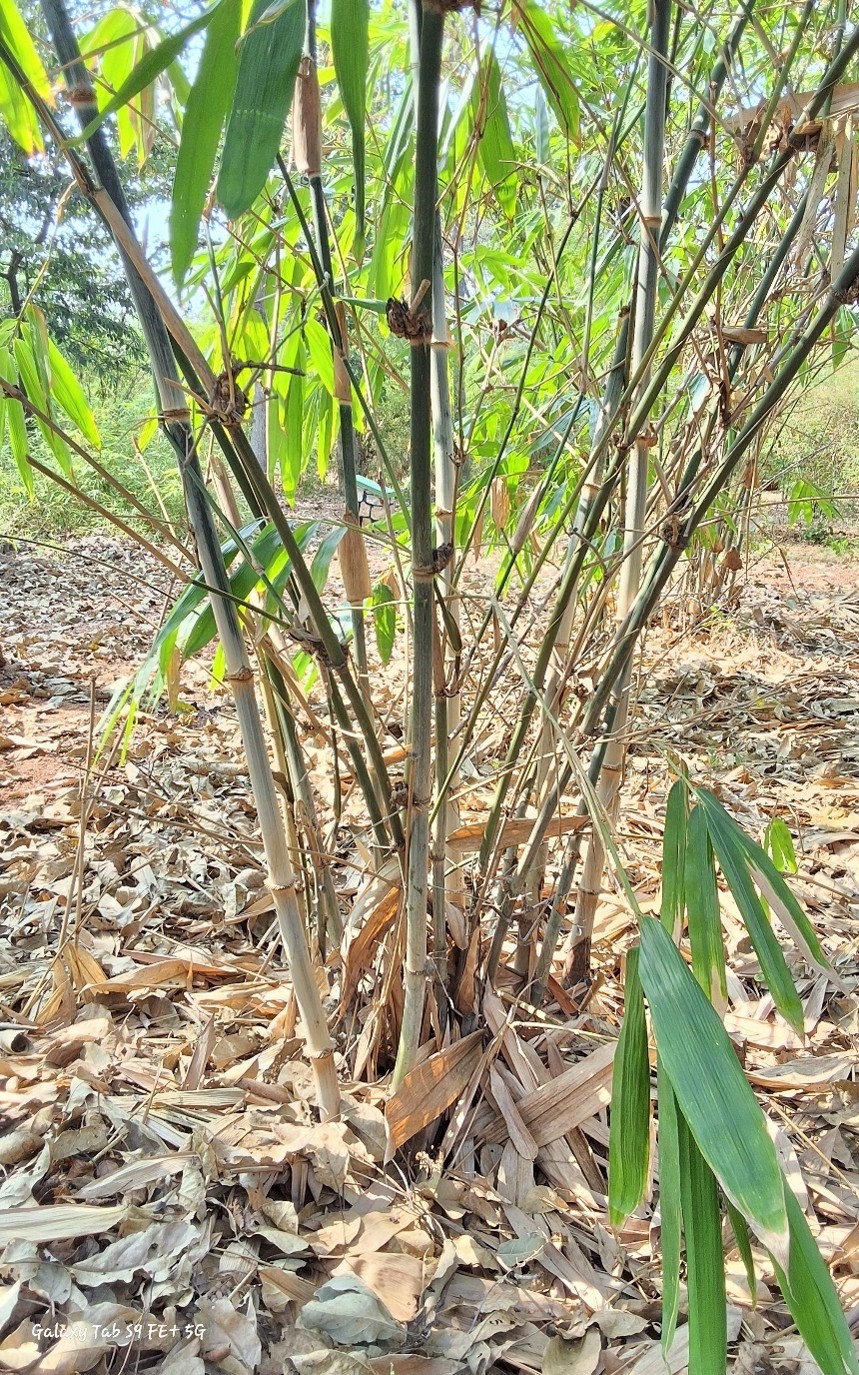Dendrocalamus sikkimensis

Dendrocalamus sikkimensis
Dendrocalamus sikkimensis also known as Sikkim Bamboo, is a clumping bamboo species native to the Sikkim region of India, though it is also found in parts of Nepal and Bhutan. This bamboo species thrives in moist subtropical and temperate forests, particularly in riverine areas and on mountain slopes at elevations between 500 m and 2,000 m. It prefers areas with high rainfall, typically receiving around 2,000 mm to 3,500 mm annually, ensuring the humid environment it requires for optimal growth. The bamboo is typically found in fertile, well-drained soils, often those rich in loamy or clay content, although it can tolerate a range of soil types. The bamboo is native to Sikkim, India, but has been introduced to various parts of India for forestry and bamboo cultivation.
The bamboo culms of Dendrocalamus sikkimensis can reach a height of 12 to 18 meters with a diameter ranging from 8 to 15 cm. Initially, the culms are green, turning light brown or yellowish as they mature. The internode length is between 25 to 45 cm, and the culm sheath is green in its early stages, turning light brown or yellowish with age. The adaxial surface of the sheath is smooth and glabrous, while the abaxial surface is covered with soft, dense brownish hairs. The margin of the sheath is ciliate. The leaves of the plant are lanceolate to ovate, measuring 25 to 45 cm in length and 4 to 7 cm in breadth, with pointed tips.
The bamboo produces a large panicle inflorescence, with multiple branches and numerous small flowers. The empty glumes are ovoid and marked with many veins, while the flowering glumes are larger, ciliate on the edges, and glabrous. The stamens are exserted with glabrous anthers, and the pistil has a hairy style with a small, inconspicuous stigma. Flowering occurs infrequently, typically once every 30 to 40 years, and has been reported in Sikkim, Nepal, and Bhutan, though it is rare and sporadic. Due to the long flowering cycle, seeds are rarely produced by this bamboo.
Propagation of Dendrocalamus sikkimensis is commonly done through culm cuttings, but it can also be propagated by dividing mature clumps, separating offsets or shoots from the base, or using tissue culture in controlled environments.
This bamboo has several uses. It is commonly used for construction, especially for making poles, scaffolding, and structures in both rural and urban areas. Sikkim Bamboo is also popular for crafting furniture, baskets, mats, and various other handicrafts. The young shoots of this bamboo are edible and are widely consumed in many Asian cuisines. The bamboo’s extensive root system makes it effective in erosion control, especially in hilly areas. Additionally, it is suitable for pulp and paper manufacturing and has traditional uses in making musical instruments, containers, and other regional products.
Listen Audio:
Need assistance? BRTC Faculty